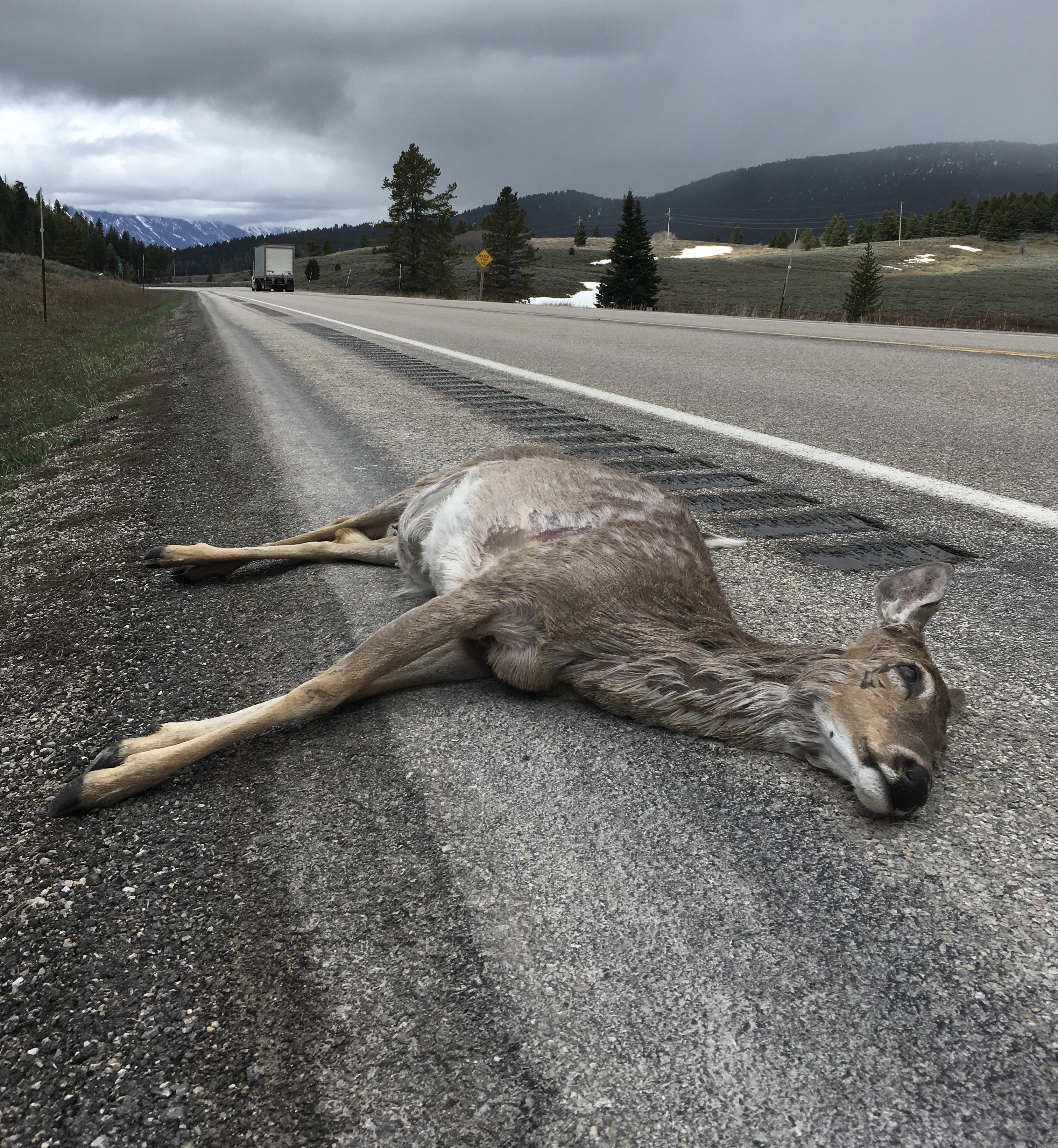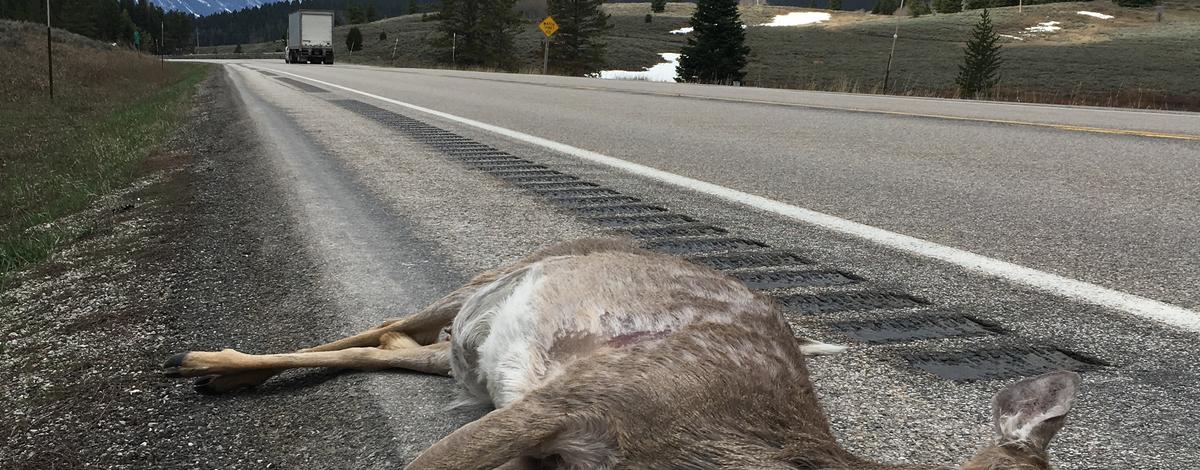With big game animals on the move for mating and migration, wildlife-vehicle collisions tend to peak this time of year. Motorists are urged to slow down and be extra careful.

The deer mating season occurs in November, and they tend to be active all day and become inattentive at times. And with increased snow in the higher elevations, Idaho’s big game herds are migrating to lower elevation winter ranges, crossing many highways and roads.
“While you can’t predict when wildlife will cross the road, being extra alert, slowing down, and avoiding driving under low light conditions if possible is your best defense,” said Greg Painter, Idaho Fish and Game wildlife manager based in Salmon.
Collisions between vehicles and wildlife are not only dangerous, they are expensive. Hitting a deer or an elk often results in thousands of dollars in vehicle damage, not to mention a preventable loss of wildlife.
To help reduce your chances of an animal collision:
- Slow down. Driving more slowly increases reaction time and reduces the chance of a collision.
- Buckle up. This won't prevent a collision, but it can save your life depending upon the severity of the accident.
- Scan ahead. Watch for movement, especially near the fog line and side of the road. When driving at night, watch for shining eyes in headlights.
- Dawn and dusk. Big-game animals are especially active at dawn, dusk and at night. Motorists should drive extra cautious during these times.
- More to follow. Where there’s one, there’s usually more. If you see one animal cross the road, slow down immediately and expect others to follow.
- Break, don't swerve. Try to brake as much as possible and stay on the roadway. The most serious crashes occur when drivers lose control of their vehicles trying to avoid an animal. It is usually safer to strike the animal than another object such as a tree or another vehicle.
- Warning signs. Pay extra attention in areas posted with wildlife crossing signs. They are there for good reason.
- Bright lights. Using high beams can help you spot wildlife, but be considerate of other drivers when using them.
- Don’t tailgate. Always keep a safe distance between you and the car in front of you to avoid any unnecessary accidents. If that driver brakes suddenly for an animal in the road, you won’t be able to react in enough time.
Of course, some accidents are unavoidable. Motorists should report any injury collision to the public safety dispatcher by calling 911, which will send officers to the scene. If possible, move your vehicle to a safe place and alert on-coming traffic with your emergency flashers until law enforcement authorities arrive.
Drivers who come across a dead animal on the side of the road are encouraged to report the roadkill on Idaho Fish and Game’s website. The information collected on wildlife collisions helps identify high-risk areas and possible solutions to make highways safer.
Wildlife collision information collected over several years on Highway 28 south of Salmon demonstrated the need for additional wildlife crossing components that were incorporated into recent bridge replacements and right-of-way clearing between Salmon and Leadore – a win-win for human safety and wildlife.
And those who want to may recover and keep certain game animals killed by accidental auto collisions. You have 24 hours to notify Fish and Game if you salvage an animal, and 72 hours to obtain a salvage permit. For more information regarding both the roadkill and salvage rules, including reporting requirements and a list of species legal to salvage, refer to https://idfg.idaho.gov/species/roadkill or contact your nearest Idaho Fish and Game office.

